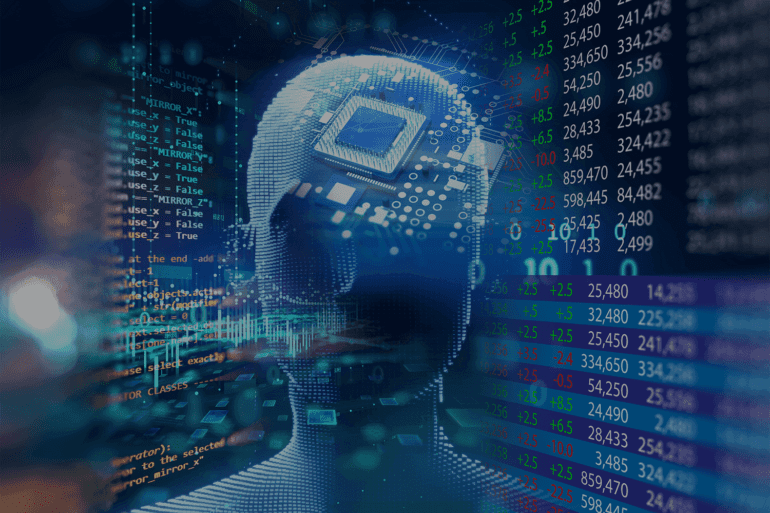TL;DR:
- AI researchers warn about a potential challenge hindering the advancement of intelligent chatbots.
- Generative AI models, including giants like ChatGPT, depend on vast internet data to learn and predict patterns.
- The rise of AI-generated content could lead to a phenomenon called “model collapse,” affecting the accuracy of predictions.
- This degenerative process might skew predictions toward common events and marginalize unique cases.
- Strategies like content filtering and high-quality data curation are proposed to counter the issue.
- Concerns arise over the long-term trajectory of large language models and their reliance on internet-derived data.
- Researchers stress the need to allocate resources effectively to address immediate challenges and future AI capabilities.
Main AI News:
As the realm of artificial intelligence hurtles forward, a potential quagmire looms, one that could impede the progress of our AI creations. It appears that the very chatter these artificially intelligent chatbots engage in might eventually eclipse the very human-generated internet data they ingest during their training process, casting a shadow over their evolution.
To dissect this issue, it’s crucial to comprehend how generative AI models operate. Behemoths like ChatGPT and innovative tools like Stable Diffusion draw upon colossal caches of internet data to decipher intricate patterns and generate responses. This wellspring of information from the web acquaints these models with the nuances of human language and imagery, shaping their predictive capabilities.
However, here’s the twist: the landscape of the internet is poised for a transformation as AI-engineered content proliferates, a landscape where these future AI models would learn not just from unadulterated human data but also from the output of their own algorithmic lineage. It’s an AI ouroboros, a metaphorical snake that consumes its own tail, potentially unsettling the equilibrium of predictions. This is the warning sounded in a pre-print paper authored by researchers from esteemed institutions such as the University of Toronto, University of Oxford, University of Cambridge, University of Edinburgh, and Imperial College London.
This phenomenon, aptly labeled “model collapse,” is vividly illustrated by co-author Nicolas Papernot. Drawing an analogy to photocopying, he elucidates that with successive iterations, the essence of the original source diminishes. The same holds true for AI models. The degenerative process could unravel their predictive prowess.
The research team, including Papernot, devised intricate mathematical models to scrutinize this potential calamity. Today’s AI chatbots are honed on meticulously curated internet-mined data, spanning the entire spectrum of human expression, from the commonplace to the extraordinary. Yet, the influx of AI-generated content, akin to pollution, threatens to distort the data pool, skewing the representation of reality. When this corrupted data courses through the veins of subsequent AI iterations, a distortion in their predictions might arise, disproportionately favoring the mundane while sidelining the unique. Such a lopsided perspective could kindle concerns about impartiality and precision.
Papernot identifies a cascading feedback loop that gradually tunes out the unconventional, amplifying the majority’s voices while relegating the uncommon to obscurity. Errors, once nestled within the AI’s predictive mechanisms, grow more pronounced with each cycle. The inevitable culmination of this process yields a model that mirrors a warped version of reality, rendering its predictions futile.
This predicament casts a shadow of doubt over the sustained pace of development in large language models. The paradigm of extensive reliance on internet-derived data might be at an inflection point, subject to the constraints imposed by this inherent issue.
Countermeasures are proposed. One involves training models to discern human-generated content from machine-produced material. However, the rapid evolution of AI technology blurs this distinction, rendering it a daunting task. Another strategy emphasizes the curation of impeccable human-generated data, a formidable undertaking given the intensifying rivalry among AI entities.
Papernot cautions that while sufficient human-generated data exists for the current phase of development, early signs of AI-induced data distortion, including biased information propagation, could materialize sooner than anticipated. As we grapple with the ongoing evolution of AI, we must balance our resources to confront immediate challenges while preparing for the ascending capabilities of these machines.
In Papernot’s words, “As we gain more certainty as to where the technology is going, we can better understand how much research to allocate to each of the problems.” This clarion call urges a nuanced approach, acknowledging the interplay between challenges and advancements and charting a course toward a harmonious AI future.
Conclusion:
The phenomenon of AI model collapse, where self-generated content overtakes human-derived data in training, poses significant market challenges. The risk of skewed predictions, amplified by the proliferation of AI-generated content, threatens to undermine the reliability and impartiality of AI systems. This could lead to a reassessment of AI development strategies and an intensified focus on ensuring data quality and fairness to maintain market credibility and user trust.

